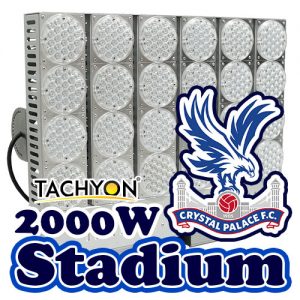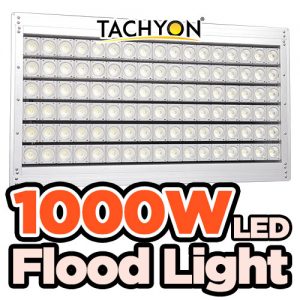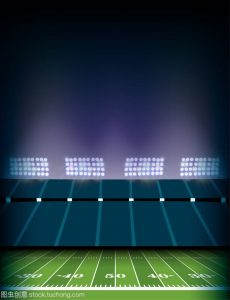The Problem That the Electrolytic Capacitor Life Does not Match the LED
An important consideration for LED lighting is that the LED driver circuit should be able to match the working life of the LED itself. Although there are many factors that affect the reliability of the drive circuit, electrolytic capacitors have a crucial impact on the overall reliability. In order to prolong the working life of the system, it is necessary to analyze the capacitors in the application in a targeted manner and select the appropriate electrolytic capacitors.
Lifetime of electrolytic capacitors
In fact, the effective operating life of an electrolytic capacitor is greatly affected by the ambient temperature and the internal temperature rise caused by the ripple current acting on the internal impedance. The electrolytic capacitor manufacturer’s rated life for electrolytic capacitors is based on exposure to the highest rated temperature environment and the application of the maximum rated ripple current.
Typical capacitor life ratings may be 5,000 hours at 105°C. The lower the working stress actually suffered by the capacitor compared to the rated level, the longer the effective working life. Therefore, on the one hand, choosing an electrolytic capacitor with a long rated operating life and a high rated operating temperature can certainly prolong the operating life. On the other hand, depending on the actual stress and operating temperature, capacitors with lower operating temperature and lifetime ratings can still be selected, providing a lower cost solution.
Issues that need attention
In other words, considering maintaining proper stress and working temperature in the design can effectively prolong the working life of electrolytic capacitors and make them more compatible with the life of LEDs.
For example, the GreenPoint® reference design for an offline LED driver compliant with the Energy Star solid-state lighting standard selected the ECA-1EM102 aluminum electrolytic capacitor, rated at 1000 μF, 25 V, 850 mA, 2,000 hours, and 85°C . At an assumed 50°C ambient temperature, this capacitor has a usable life of over 120,000 hours. Therefore, try to make the LED drive circuit work in a suitable temperature condition and properly handle the heat dissipation problem, so as to realize the matching problem of the LED drive circuit and the working life of the LED.
In general, if electrolytic capacitors must be used in LED drive circuits, efforts must be made to control the application force and operating temperature of the capacitors, so as to maximize the working life of the capacitors to match the life of the LEDs. On the other hand, designers Electrolytic capacitors should also be avoided as much as possible.
Common Causes and Solutions of LED Lights Flickering
frequency
Usually the human eye can perceive light flickering at frequencies up to 70 Hz, and above this frequency it is not. Therefore, in the application of LED lighting, if the pulse signal has a low frequency component with a frequency lower than 70Hz, the human eye will feel flickering.
Of course, in a specific application, there are many factors that may cause LED lights to flicker. For example, in off-line low-power LED lighting applications, a common power supply topology is the isolated flyback topology.
Taking the GreenPoint® reference design of an 8W offline LED driver compliant with the “Energy Star” solid-state lighting standard as an example, since the sine-square-wave power conversion of the flyback regulator does not provide constant energy to the primary bias, the dynamic self-powered (DSS) ) circuit may activate and cause light flickering. To avoid this problem, it is necessary to allow the primary bias to be partially discharged at each half-cycle, and accordingly, the magnitude of the capacitors and resistors that make up this bias circuit needs to be properly selected.
EMI filter
In addition, electromagnetic interference (EMI) filters are required even in applications using LED drivers that provide excellent power factor correction and support TRIAC dimming. Transient currents caused by TRIAC steps can excite the natural resonance of inductors and capacitors in EMI filters.
If this resonant characteristic causes the input current to drop below the TRIAC holding current, the TRIAC will turn off. After a short delay, the TRIAC will normally turn on again, exciting the same resonance. This sequence of events may repeat multiple times during one half-cycle of the input power waveform, resulting in visible LED flickering.
To address this, a key requirement for TRIAC dimming is that the EMI filter has a very low input capacitance that can be decoupled through the TRIAC and the winding impedance. According to the formula, if the capacitance in the dimming module is reduced, the resistance of the resonant circuit can be increased, which in principle can suppress the oscillation and restore the desired circuit operation.
How Does PWM Dimming Affect the Life of LEDs
The LED itself has a long life, and PWM dimming does not compromise the life expectancy of the LED. Even because PWM dimming helps reduce LED heat generation, it actually helps extend LED life expectancy. Of course, in the system design, it is necessary to effectively detect and control the temperature of the LED to ensure the reliable operation of the LED, reflecting the advantages of its long life and low maintenance cost.
Potential Problems of Using TRIAC Dimming to Control LED Brightness
At present, TRIAC dimming is a popular dimming method in the market. TRIAC dimmers were originally designed for incandescent lamps. But leading suppliers have also introduced LED drivers that support TRIAC dimming, ideal for providing TRIAC dimming in LED lighting. However, this method also has its limitations, such as increasing circuit complexity, affecting power factor, and relatively limited dimming levels.
A supplier of high-performance, energy-efficient silicon solutions for green electronics has recently introduced the NCL30000 LED driver for residential and commercial LED lighting applications. The device uses a critical conduction mode (CrM) flyback architecture to provide a power factor higher than 0.95 in a single-stage topology, thereby eliminating the need for a DC-DC conversion stage and simplifying the circuit.
The device provides extremely high energy efficiency even at low levels, meeting various specifications and overall system efficacy requirements. In addition, the device is compatible with leading edge TRIAC dimmers and trailing edge transistor dimmers. Depending on the dimmer used, the LED light output can be adjusted to less than 2%, providing excellent dimming performance.




